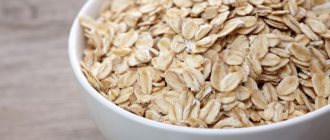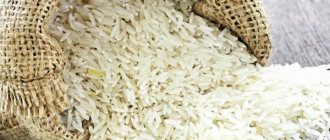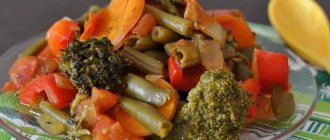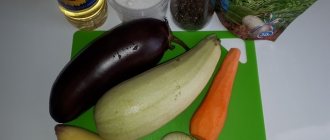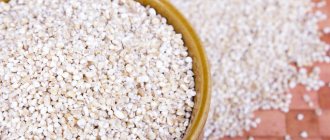The benefits of stewed vegetables
This cooking method is considered the most gentle. During the process of cooking, baking, blanching and other heat treatment methods, most of the valuable vitamins, minerals and trace elements are lost. Eating stewed vegetables is especially useful for gastritis and gastric ulcers. In addition, this food is recommended for overweight people and diabetics.
Vegetable stew. Calorie content per 100 grams
Stewed vegetables, the calorie content of which depends on the processing method, have the following advantages:
- high content of vitamins, minerals and microelements, especially necessary during the diet;
- cooking without using oil guarantees low calorie content of the dish;
- during heat treatment they do not lose fiber, which helps quickly saturate and cleanse the body;
- Due to the low carbohydrate content, weight loss occurs faster, while the liver is not overloaded.
Are vegetables fiber or carbohydrates?
In the context of BZHU, we note that in general, plant products are not rich in either protein or fats, and the highest content in them is carbohydrates. At the same time, a significant amount of weight and volume is provided by fiber, which in general terms also refers to the latter. They are known to be a valuable source of energy, but if you lead a sedentary lifestyle and do not have the opportunity to spend it regularly, carbohydrates will also contribute to excess weight gain.
It must be said that when calculating the balance of BJU, fiber is usually not taken into account, since it is poorly absorbed. The human body does not have its own enzymes that could break it down; only the intestinal microflora can cope with this task, and then only partially. For this reason, fiber passes through the digestive tract almost unchanged and does not add calories.
In fact, most types of vegetables contain both fiber and other carbohydrates, but there is still much more of the former. Therefore, many plant foods can be included even in low-carbohydrate diets, for example, lentils, beans, green vegetables.
Fiber in fruits
Fiber is a substance of plant origin that is practically not digested, but, having fulfilled its function in digestion, is excreted by the body. However, this process is not as simple as it might seem at first glance. Passing through the intestines, fiber cleanses it of “food residues,” toxins and excess fat.
Nutritionists agree that you should consume at least 25 grams of dietary fiber daily. To increase the beneficial effects of fiber on the body, it is important to maintain water balance and drink 1.5-2 liters of still water daily.
Stewed vegetables that contain the most fiber per 100 g:
- pumpkin – 5.74 g;
- green beans – 3.4 g;
- carrots – 2.4 g;
- white cabbage – 2.2 g;
- cauliflower – 2.1 g;
- spinach – 1.3 g.
Calorie content of vegetable salads for weight loss
Of course, most vegetables are tasty on their own, but you always want to diversify the menu with unusual dishes that are healthy for your figure. The easiest way to prepare vegetables is to make a salad that combines the beneficial properties of its ingredients.
The calorie content of a vegetable salad for weight loss is calculated by summing the number of calories of each product included. As an example, let me offer you a recipe for a delicious and healthy salad.
Vegetable salad “Breath of Summer”
- Tomato – 100 g (16 kcal);
- Cucumber – 100 g (15 kcal);
- Parsley – 10 g (4.7 kcal);
- Bell pepper – 50 g (13.5 kcal);
- Olive oil – 5 g (44.9 kcal);
- Salt – 2 g (0 kcal).
The total weight of the salad is 267 g, the total number of calories is 94.1 kcal, that is, the calorie content of such a salad per 100 g will be 35.3 kcal. Thus, the low calorie content of vegetable salad allows you to use such a dish for the benefit of the body and without harm to the figure.
Non-starchy and starchy vegetables
Starchy vegetables contain starch. During digestion, it turns into glucose, the most common form of polysaccharides. Non-starchy vegetables, due to the lack of starch, are especially useful for people who want to lose weight.
The highest percentage of this substance is found in root vegetables and some grain crops, which accumulate nutrients for the growing season of the plant itself and its future shoots. There is an opinion that the record holder for starch content is potatoes, however, this is not entirely true, although it has a fairly high content of the substance (16-18%).
If you include starchy vegetables in your diet, you need to combine them correctly, for example, with green non-starchy fruits, vegetable or animal fats. What you shouldn’t do is serve them together with protein products, sugar, and acids.
Basic rule: one dish - one type of starchy vegetables. Non-starchy vegetables should be the basis of your diet when losing weight. The only thing that nutritionists do not recommend combining this type of product with is milk, as well as sauces, cheese, sour cream and other dairy products.
The classification of vegetables is shown in the table:
| Starch | Moderately starchy | Non-starchy |
| potato | carrot | eggplant |
| zucchini | soybeans | greenery |
| legumes | cauliflower | onion |
| pumpkin | turnip | Chinese cabbage, cabbage, broccoli |
| beet | asparagus | |
| radish, radish | cucumbers | |
| parsley roots, horseradish | Bell pepper | |
| garlic |
Why are vegetables good for weight loss?
The presence of vegetables on the table of a person losing weight is mandatory, although they themselves do not burn fat, but:
- supply the human body with vitamins, beneficial microelements, fiber;
- allow you to achieve a feeling of satiety;
- They have such a low calorie content that they can be consumed without fear of harming your figure.
Very often, by torturing themselves with all kinds of diets, people cause irreparable harm to their health, depriving the body of substances necessary for normal functioning. If you eat right, consuming a large amount of vegetables, which contain few calories and a huge amount of useful elements, the need for a diet will disappear by itself.
Which stewed vegetables are harmful?
Despite all the beneficial qualities recognized by doctors, nutritionists and chefs all over the world, scientists have identified one drawback to their use. As it turned out, stewed and fried vegetables are harmful to teeth. The fact is that during culinary processing the concentration of acids in them increases, which negatively affects the condition of the teeth and leads to caries.
It is better to exclude stewed vegetables, which are low in calories, from the diet:
- zucchini;
- eggplant;
- Bell pepper.
Dentists recommend being more attentive to hygiene issues, especially if a person likes to eat fried eggplants. After eating, be sure to rinse your mouth with warm water. Infectious disease specialists also call for excluding frozen corn from the diet.
Scientists have found that it can cause leaf cutter infection. The bacteria, called Listeria, causes mild intestinal disorders in adults, but for children, the elderly and pregnant women, infection can lead to poisoning and even death. Listeria has been found not only in frozen corn, but also in frozen beans and spinach.
How to cook vegetable stew without oil
Repost
It is not necessary to add oil to vegetable stew. You can cook without any oil at all. In fact, butter (which is not healthy at all) usually adds fat and calories to a dish.
Nutritionist Julianne Heaver says: “Contrary to popular belief, butter is not a health food. Butter is 100 percent fat, with 120 calories per teaspoon of butter, which is low in nutrients but high in calories. Although some oils contain nutrients in small quantities, they provide no real benefit. Reducing or eliminating oil intake is an easy way to reduce your calorie and fat intake.” Thus, it is better to cook vegetable stew without oil if possible.
Here's how to do it:
1. Buy or make a good vegetable broth.
Instead of adding vegetables directly to the pan, add water or vegetable broth first. The problem is that you need to prepare it and buy it in advance, but since you are buying butter anyway, this will not cause you any extra hassle.
Making broth isn't very difficult - you can find a great low-sodium broth recipe, and then you're ready to make vegetable stew without oil. Don't feel like you're wasting your time and money! Vegetable broth can be used in soups, sauteed vegetables, and can even be frozen into cubes for later use.
2. Find a non-stick frying pan or wok.
Since oil lubricates the pan and prevents food from burning, skipping it can cause some inconvenience. If you don't already have a good non-stick frying pan, it's worth buying one.
Don't feel like you'll never use it or that you're wasting money on extra kitchen utensils because this frying pan will last you a very long time if you take good care of it and it's very multi-functional. Whatever brand you choose, make sure that the coating is not made from very harmful materials (choose an environmentally friendly coating if possible), and be sure to wash the pan by hand so as not to scratch the coating.
List of the most high-calorie fruits
Plant foods that contain the most calories:
- melon. This melon crop, 100 g of which contains approximately 35 kcal, despite the fact that most of its composition is carbohydrates. People suffering from diabetes should completely exclude it from the diet or strictly limit it;
- kohlrabi. The vegetable is high in fiber, which makes it especially beneficial for people with digestive disorders. Fresh kohlrabi contains 42 kcal, but depending on the cooking method, this figure may increase;
- beet. This healthy root vegetable contains 49 kcal. Despite the high content of fiber and vitamins, nutritionists recommend limiting its consumption to people on a diet. The fact is that boiled beets have a high carbohydrate content - 10.8%;
- sweet potato. Boiled fruits contain about 60 kcal. Due to the high amount of sugars, sweet potatoes should not be eaten by people suffering from diabetes and overweight;
- Jerusalem artichoke. Jerusalem artichoke is characterized by a high carbohydrate content - 12%, which is why experts in the field of dietary nutrition strongly do not recommend including it in the diet of people who want to lose weight;
- potato. The number of calories in it directly depends on the method of preparation. Boiled and stewed fruits contain 80 kcal, fried ones - almost 2.5 times more, and potato chips - 6.5 times more;
- corn. The calorie content of boiled corn during heat treatment increases to 110 kcal, and canned corn – to 120 kcal;
- lentils. The high calorie content of the product - 110 kcal - is explained by the significant content of starch and carbohydrates;
- beans. 100 grams of boiled beans contain 123 kcal;
- chickpeas This is the variety of pea with the highest calorie content from the presented list of products - 127 kcal per 100 grams. This figure may increase depending on the cooking method.
How many calories are in vegetables
There is no average caloric value for vegetables, since with all their diversity it is difficult to give one single value. And for the same reason, it is not possible to analyze absolutely each one in detail. But it is permissible, by dividing into groups, to create a table of calorie content for vegetables, considering, if not all those available on the globe, then at least those most often found in food. Of course, there are a great many classifications for this category of products: they can be divided according to anything, even color. In descriptions of diets, for example, very often there is an indication of non-starchy vegetables, or especially enriched with protein. But to consider them for calorie content, it is better to use the one that divides them according to the most obvious characteristics. It’s worth giving the entire list first, and then studying each category, so that in the end you can clearly understand which specific vegetables from the calorie table are best suited for lunch, and which ones you can safely snack on before bed.
By and large, there are only two groups of vegetables: vegetative and fruit, but to consider the calorie content, a more detailed breakdown is required, and therefore the distribution in the table of calorie content of vegetables will be immediately divided into subcategories included in the main groups.
1) Tubers. Not the most numerous category, including Jerusalem artichoke, sweet potato and potatoes. The last representative of this subgroup is most actively consumed as food, by and large replacing bread in the cuisine of the Slavic peoples. From the point of view of the calorie content of the vegetable, it will probably be lighter than bread, and from the point of view of its chemical composition, it will be even healthier. However, taking into account the difficulty of digesting it and a certain heaviness present after consumption, it is recommended to leave it for lunch time, and not include it in recipes for dinner. As for the calorie content of vegetables included in the subgroup of tuber vegetables, the lightest is considered to be sweet potatoes, called sweet potatoes, but in fact they resemble the latter only in the form of tubers. The calorie content of sweet potato is 60 kcal per hundred grams. It is followed by the “earthen pear” - Jerusalem artichoke - with a calorie content of 62 kcal per hundred grams. And the third is completed by potatoes, whose calorie content is the highest - 77 kcal per hundred grams.
2) Root vegetables. This is, perhaps, almost the most “densely populated” subgroup, which includes a dozen different vegetables. Carrots, turnips, radishes, beets, radishes, rutabaga, parsley roots, celery and parsnips. All of them grow in gardens and vegetable gardens, and therefore there are no problems with the availability and understanding of these representatives of root crops. Their calorie content generally ranges from 20 kcal to 51 kcal per hundred grams, and therefore will have to be indicated separately for each vegetable.
The calorie content of radishes is perhaps the most insignificant and amounts to 20 kcal per hundred grams; in addition, it has a good effect on metabolism and the digestive system, and therefore is very often recommended for use in diets. For daikon - Asian radish - the figure will be 21 kcal, but for classic black and green it will increase to 36 kcal and 32 kcal, respectively. Turnips with a calorie content of 32 kcal, carrots with a calorie content of 35 kcal and rutabaga with a calorie content of 37 kcal can also be considered quite light. Not much ahead of them in terms of “weight” are beets - 42 kcal, as well as the roots of parsley, celery and parsnip - 51, 34 and 47 kcal for each.
3) Onion. There are not many “faces” here, but they are all indispensable in the process of losing weight, as well as for the immune system. Onions “weigh” only 41 kcal, leeks - 36 kcal, shallots - 72 kcal, but garlic is 149 kcal. But in the case of the latter, there is no point in being interested in how many calories are in a vegetable and then worrying: it is not used much in food, and its properties in the field of nutrition exceed any values.
4) Fruits. Along with root vegetables, this is the largest group, with many representatives and subgroups. The most famous are tomatoes, cucumbers, eggplants, zucchini, pumpkin, squash, peppers, and artichokes. They are the ones that most often end up on the table, both as a side dish and as an independent dish: for example, vegetable stew. They are served fried, baked, steamed, stewed. The calorie content of vegetables in the last two options is the lowest if fats in the form of oil or mayonnaise are not added to them. Then it can even decrease compared to the value for fresh products. For example, for tomatoes, eggplants and zucchini, the raw indicator is 19 kcal for the first and 24 kcal for the rest. While for the same vegetables, the calorie content in stewed form will already be 16 kcal for tomatoes, 23 kcal for zucchini and 26 kcal for eggplants. If oil is added, the caloric value for stewed vegetables naturally increases.
The remaining representatives of the fruit group also vary quite significantly in fresh calorie content. Cucumber – 14 kcal, pepper – 26 kcal, squash – 19 kcal, pumpkin – 22 kcal, artichoke – 28 kcal.
Cabbage also belongs to the group of fruits, and the calorie content for the most familiar of all, cabbage, is 35 kcal, broccoli - 34 kcal, and cauliflower - 30 kcal. Beans, which belong to the legume subgroup, have a calorie content of 298 kcal, but given their high satiety and protein content, which they can compete with even meat, every calorie from the vegetable is justified.
Where are the fewest calories?
Stewed vegetables should undoubtedly be included in the diet, but only paying attention to the calorie content. Most of them saturate the body with fiber, which means that a person will receive the necessary energy and will be able to suppress hunger.
Low calorie foods include:
- carrot. This vegetable is one of the best dietary products. It has a pleasant sweetish taste; it can be added to salads, stewed, boiled and baked. Half a cup of grated carrots contains 30 kcal;
- Bell pepper. Due to the high content of vitamin C, sweet peppers speed up metabolism, burn fat, strengthen the immune system, suppress hunger, while 100 g of product contains no more than 40 kcal;
- cucumber. It is not only the lowest-calorie vegetable (100 g contains 15 kcal), but also perfectly refreshes and tones. It can be used for preparing salads, drinks, cold appetizers;
- tomato. One medium tomato contains just over 20 kcal. Thanks to the acids in its composition, tomato is able to break down fats and carbohydrates. It also contains a lot of fiber, vitamins and microelements, which makes it an indispensable product in dietary nutrition;
- zucchini. This vegetable, like cucumber, has a high water content and a minimum of calories, only 17 kcal per 100 g of product;
- mushrooms. They are a valuable source of protein necessary for the construction of new cells. Therefore, some of their types are recommended to be included in the diet of people on a diet, especially since 100 g of the product contains no more than 50 kcal;
- broccoli. One of the healthiest and lowest-calorie types of vegetables. A serving of steamed broccoli contains just over 30 kcal;
- cauliflower. Very often, nutritionists recommend serving cauliflower as a side dish. One serving of this vegetable contains only 25 kcal;
- pumped cabbage. It is noteworthy that cabbage is one of the few foods containing Omega-3 fatty acids. In addition, due to its low calorie content (30 kcal per 100 g) and high nutritional value, cabbage can be consumed in almost all types of existing diets;
- spinach. 100 g of fresh or 50 g of stewed spinach contains only 21 kcal.
- celery. Celery root is a tasty and healthy product that is equally good both fresh and thermally processed. It is considered one of the best foods for dietary nutrition. There are only 16 calories in 100 grams of celery.
- lettuce leaves. A bunch of green salad contains no more than 10 kcal. Regardless of the variety chosen, the number of calories will be approximately the same.
- asparagus. It contains fiber, vitamins, microelements, while being free of fat and cholesterol. 100 g of product contains only 20 kcal.
How many calories are in stewed zucchini?
A 100-gram piece of squash pulp contains no more than 25 kcal, and there is no trace of fat in this vegetable. But even with such a low energy value, zucchini remains one of the richest foods in vitamins, minerals and fiber.
It is worth noting that the glycemic index of zucchini is quite low (15); it has absolutely no effect on blood sugar levels, which makes it an ideal product not only for weight loss, but also for diabetics.
Zucchini is prepared in a variety of ways. Of all the possible cooking techniques, fried zucchini remains the least useful and absolutely non-dietary, because this vegetable absorbs oil like a sponge.
Undoubtedly, raw zucchini has the greatest benefits, followed by oven-baked zucchini.
As for stewing, everything is ambiguous. As mentioned above, zucchini absorbs oil very well; therefore, zucchini stewed in this way will have a calorie content of around 70 kcal.
The calorie content of zucchini stewed without oil in water will remain equal or even less than the calorie content of the raw product - 22-24 calories. And there is no fundamental difference where exactly you will stew the vegetable: in a frying pan, a pot or a slow cooker.
However, stewed zucchini is rarely cooked in its pure form. This method is usually used to prepare baby food. The zucchini is first stewed in water with a minimal addition of salt, and then smashed with a blender into a homogeneous paste.
Table of calorie content of stewed vegetables per 100 g, BJU
Stewed vegetables, the calorie content of which does not change when stewed without the use of oil, are presented in the table:
| Vegetable | Calories per 100 g | Carbohydrates | Squirrels | Fats |
| potato | 83 | 19,7 | 2 | 0,4 |
| onion | 43 | 9,5 | 1,7 | 0,2 |
| carrot | 33 | 7 | 1,3 | 0,1 |
| cauliflower | 29 | 4,9 | 2,5 | 0,3 |
| White cabbage | 28 | 5,4 | 1,8 | 0,1 |
| zucchini | 27 | 5,7 | 0,6 | 0,3 |
| red sweet pepper | 27 | 5,7 | 1,3 | 0,1 |
| eggplant | 24 | 5,5 | 0,6 | 0,1 |
| tomatoes | 24 | 3,8 | 1,1 | 0,2 |
| sweet green pepper | 23 | 4,7 | 1,3 | 0,1 |
| broccoli | 23 | 1,7 | 3,3 | 0,2 |
| zucchini | 19 | 2,2 | 1,6 | 0,4 |
| cucumbers | 15 | 3 | 0,8 | 0,1 |
| asparagus | 14 | 1,2 | 1,9 | 0,1 |
Calorie content of sauces
Sauces are considered a seasoning for the main dish and side dish. They were first classified by the French as a replacement for salt and a transition to more diverse options.
sauces for all culinary occasions
| Dish name: | Calorie content (per 100 grams) | Squirrels | Fats | Carbohydrates |
| Tomato paste | 91 | 5,6 | 1,4 | 16,7 |
| Mustard | 162 | 5,7 | 6,3 | 21 |
| Ketchup | 92 | 1,8 | 1,2 | 22,1 |
| Mayonnaise Provencal | 624 | 3,1 | 66 | 2,6 |
| Mayonnaise Homemade | 568 | 5,2 | 58,7 | 4,4 |
| Worcestershire sauce | 78 | 0 | 0 | 19,7 |
| Mushroom sauce | 82 | 1,2 | 4,8 | 6,2 |
| Sweet and sour sauce | 167 | 0,3 | 0,8 | 39,7 |
| Horseradish sauce | 27 | 0,7 | 4,2 | 0,1 |
| Cranberry sauce | 180 | 0,2 | 1 | 42 |
salsa and cheese sauce
Recommended serving sizes. Daily norm
Daily intake of vegetables and fruits: 300-400 g. What is approximately:
- 1 medium apple;
- 1 tomato;
- 2 large apricots;
- 1 banana;
- 1 cucumber;
- 1 carrot;
- a handful of berries;
- 0.5 grapefruit;
- medium sized orange.
This is the minimum norm for an adult and recommended by WHO.
The more fruits, berries and vegetables you eat, the better for your health. The variety in this case is the method of their preparation. It is necessary to include stewed, boiled, steamed vegetables in the diet; they can be added to salads, snacks, soups, side dishes and casseroles. Starchy fruits should not be combined.
Recipes for stewed vegetables with calorie content
Stewed vegetables, the calorie content of which does not increase after heat treatment, must be properly cooked.
To do this, you must follow the rules:
- Vegetables cooked steamed or in a slow cooker retain the maximum amount of nutrients;
- It is important to choose the right cookware. A pan with a thick bottom is best for stewing. Among the manufacturing materials, preference should be given to steel;
- it is advisable to simmer vegetables over low heat under a lid for no more than 40 minutes;
- Before cooking, it is better to finely chop the cabbage; the remaining vegetables can be coarsely chopped;
- It is best to stew vegetables in their own juice, or by adding a little water;
- if only seasonal products are on sale, they can be combined with frozen ones, which should first be defrosted naturally. If you cook exclusively frozen vegetables or add fresh ones to them, defrosting is not required;
- Bay leaf is considered an excellent seasoning for stewed vegetables; you need to add it 10 minutes before the dish is ready.
The time required to cook the vegetables is:
- eggplants and zucchini – 25 minutes;
- cabbage and potatoes – 50-60 minutes;
- onions and carrots – 20 min;
- beets – 30 min.
On the water
Cooking features:
- It’s better to use a deep saucepan or cauldron, so the vegetables will retain their flavor;
- acidic additives, such as lemon juice or tomato, must be added 10 minutes before the end of cooking. If you do this earlier, the total cooking time will increase;
- you need to add seasonings to the dish, since stewing in water makes vegetables tasteless;
- Before cooking, the tomatoes must be doused with boiling water and the skins removed.
To prepare vegetables, you need to take:
- zucchini – 1 pc.;
- tomato – 2 pcs.;
- medium-sized onion – 1 pc.;
- tomato sauce – 2 tbsp. l.;
- water – 400 ml;
- salt – 4 g.
The components are designed for a dish volume of 900 g.
Cooking process:
- Wash all components using a soft washcloth.
- Cut the onion into half rings and the zucchini into cubes.
- Grate the carrots.
- Place the vegetables in the pan in layers, starting with the onion, then the carrots and zucchini.
- Cut the tomatoes into slices and place on top of the remaining vegetables.
- Fill the dish with water and add tomato sauce.
- Add salt.
- Start simmering and continue for 30 minutes. over low heat.
The calorie content of such a dish is 20 kcal per 100 g.
With oil in a frying pan
Cooking features:
- the addition of vegetable oil enhances the taste of the finished dish;
- It is better to simmer in olive oil, it does not oxidize compared to vegetable sunflower oil;
- To prevent the oil from releasing carcinogens, it is better to add it at the end of stewing or directly to the plate when serving the dish.
The output volume of the dish is 1.2 kg.
To cook vegetables with butter, you need to take:
- zucchini – 1 pc.;
- eggplant – 1 pc.;
- potatoes – 300 g;
- white cabbage – 500 g;
- onion – 1 medium-sized head;
- water 200-300 ml;
- Sunflower oil – 2 tbsp. l.
Cooking method:
- Wash the vegetables under running water and peel.
- Cut the zucchini, eggplant and potatoes into cubes.
- Shred the cabbage.
- Cut the onion into half rings.
- Place the ingredients in a frying pan and add salt to taste.
- Add water and oil and start simmering.
- Simmer over low heat for 30 minutes.
Calorie content of 100 g of dish is 57.5 kcal.
In its own juice
Vegetables cooked in their own juice retain their aroma, juiciness and taste.
The cooking features are:
- Tomato paste or juice is suitable as a sauce;
- since with this method of stewing vegetables retain their taste, it is recommended to add a minimum of salt;
- stewed cabbage is often included in a weight loss program because it quickly satisfies hunger;
- Do not add oil while stewing, it will change the taste;
- for cooking, choose a pan with a thick bottom;
- you can add spices: coriander, basil, turmeric, garlic, black pepper;
- Do not stew sausages or sausages with vegetables.
To prepare stewed cabbage in its own juice, you need to take:
- cabbage – 0.5 kg;
- carrots – 2 pcs.;
- onion – 1 pc.;
- tomato paste – 200 ml;
- tomato – 5 pcs.;
- bay leaf and spices;
- water – 0.5 cup.
Instead of cabbage, you can add 1 zucchini and 1 bell pepper. The resulting volume of the dish is 1 kg.
Preparation:
- Shred the cabbage and leave for 20 minutes. and squeeze out the juice.
- Cut the tomatoes into cubes, grate the carrots on a fine grater, and cut the onion into half rings.
- Place the vegetables in a saucepan and add water, add bay leaf.
- Light the fire and simmer for 20 minutes.
- Season with tomato paste and spices.
- Leave the dish to cook on the stove for another 25-30 minutes.
Calorie content of 100 g of the finished product is 50 kcal.
In the oven
Cooking features:
- a minimal amount of liquid is added. Due to the low cooking temperature, vegetables release juice, which, when mixed with water, forms a sauce;
- dishes prepared in this way are easily digested by the body;
- To prevent a crust from forming on the vegetables during stewing, the baking sheet or mold should be tightly covered with foil;
- stewing lasts about 60 minutes.
There are 2 ways to cook vegetables in the oven:
- classical. Vegetables cut into cups are stewed with the addition of water or sour cream or cream. After bringing to a boil, the dish remains to simmer in the oven under the lid;
- breezing. Vegetables are cut into cubes and stewed with the addition of broth. At the end of the cooking process, you need to open the lid so that a crust forms on the dish.
To prepare a side dish of vegetables, you need to take:
- eggplant – 2 pcs.;
- sweet pepper – 4 pcs. (you can take 2 red and 2 yellow);
- onions – 2 pcs.;
- cabbage – 0.5 kg;
- oil - if necessary;
- salt, spices and garlic to taste.
Water is not used in this recipe because the vegetables will produce juice without it. The resulting volume of the finished dish is 1.3 kg.
Preparation:
- Wash the vegetables and dry with a towel.
- Peel by cutting off the stems of the eggplants and scooping out the seeds from the peppers.
- Cut all foods into cubes except garlic. It can be cut in half or into thin slices.
- Preheat the oven to 180°C.
- Place the vegetables on a baking sheet and sprinkle with spices and, if desired, drizzle with oil.
- Cook the dish for a maximum of 60 minutes, check readiness after 40 minutes. If the vegetables become soft, then enough time has passed.
The calorie content of 100 g of the finished dish is 40 kcal.
In a slow cooker
Cooking features:
- when selecting the “Stewing” program, the device cooks vegetables at temperatures up to 90 °C, which means it does not destroy beneficial substances;
- Vegetables that take longer to cook should be cut into smaller cubes to speed up the process, and those that cook faster should be cut into larger cubes. For example, beets need 2 times more time than potatoes, which means that when cooking them together they need to be cut into cubes 2 times smaller than potatoes;
- if potatoes are stewed with other vegetables, it is better to salt the dish after the end of the program, otherwise the root vegetable will take longer to cook;
- The finished dish can be sprinkled with finely grated cheese, it will add aroma and a special taste.
To prepare stewed vegetables in a slow cooker, you need to take:
- zucchini – 0.5 kg or 2 pcs.;
- carrots – 2 pcs.;
- tomato – 5 pcs. medium size;
- onion – 1 pc.;
- sweet pepper – 2 pcs.;
- water – 100 ml;
- tomato juice or paste – 200 ml;
- salt and spices.
Optionally you can add:
- beans – 200 g;
- potatoes – 7 pcs.
The volume of the finished dish is 1.5 kg.
Step-by-step preparation:
- Cut the vegetables into cubes, and the onions and peppers into half rings.
- Place all components in the multicooker bowl, close the lid and steam release valve.
- Select the “Extinguishing” program and set the time to 40-60 minutes.
- After notifying the end of cooking, open the lid and carefully stir the dish with a flat spoon so as not to turn it into a homogeneous mass.
Calorie content per 100 g of finished dish is 60 kcal.
Stewed vegetables should be an integral part of the human diet. Their calorie content remains virtually unchanged during the cooking process, and long-term simmering at low temperatures allows them to preserve nutrients and taste.
Recipe for stewed zucchini for weight loss
Zucchini is a unique product, the consumption of which gives a feeling of satiety and at the same time reduces fatty tissue in the most problematic areas.
The basis of the diet is zucchini dishes, which are combined with other products: lean meat or fish, low-calorie vegetables, cottage cheese, eggs and herbs.
To season dishes, use a small amount of vegetable oil and lemon juice. Prohibited foods include smoked meats, baked goods, sweets, alcohol, potatoes and coffee.
Zucchini stew with vegetables
Required ingredients:
- 3 young zucchini;
- 2 red bell peppers;
- 2 medium carrots;
- 4 tomatoes;
- 1 onion;
- olive oil;
- greenery;
- a pinch of pepper and salt.
Recipe:
- Fry onions and carrots in oil.
- Cut the pepper into strips and add to the frying.
- Add peeled and diced zucchini to vegetables. They will release juice. Simmer the vegetables until the liquid in the pan is reduced by half.
- The tomatoes are peeled, chopped and placed in a dish.
- Pepper and salt to taste.
- Add greens.
Zucchini stewed in a slow cooker
Ingredients:
- 1 young zucchini;
- 3 fresh tomatoes;
- onions, garlic, herbs;
- sour cream.
Recipe:
- The zucchini is cut into small pieces, the tomatoes into slices. The onion is finely chopped and the garlic is ground to a pasty state.
- Oil is poured into the bottom. Turn on the “Baking” mode, stew the zucchini with onions.
- When the vegetables become soft, add chopped tomatoes, garlic, herbs and salt.
- Pour in sour cream with a small percentage of fat content.
- After completing the “Baking” mode, the dish is brought to readiness in the “Warming” mode.
